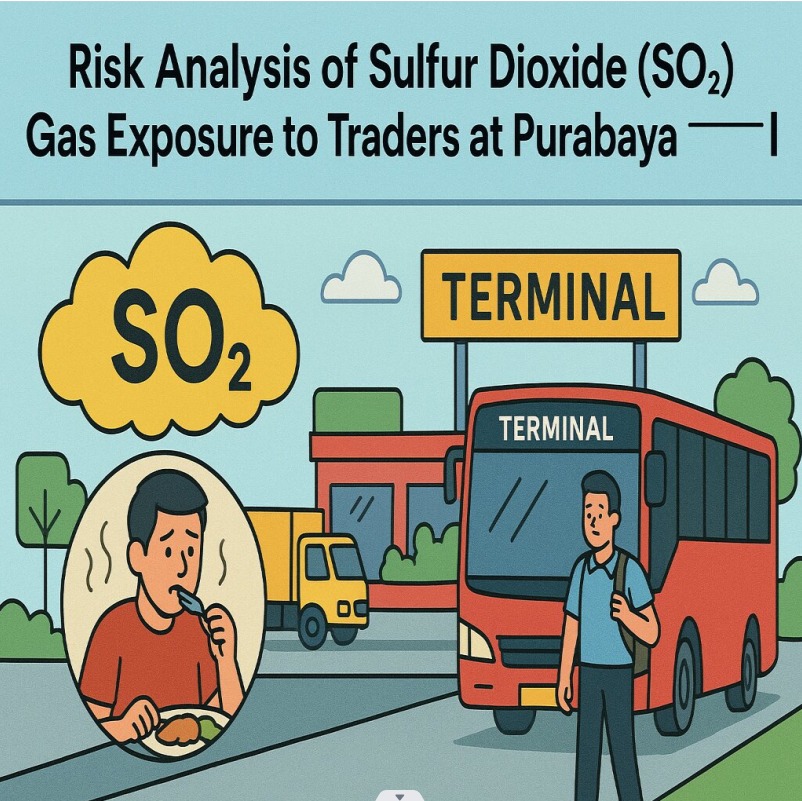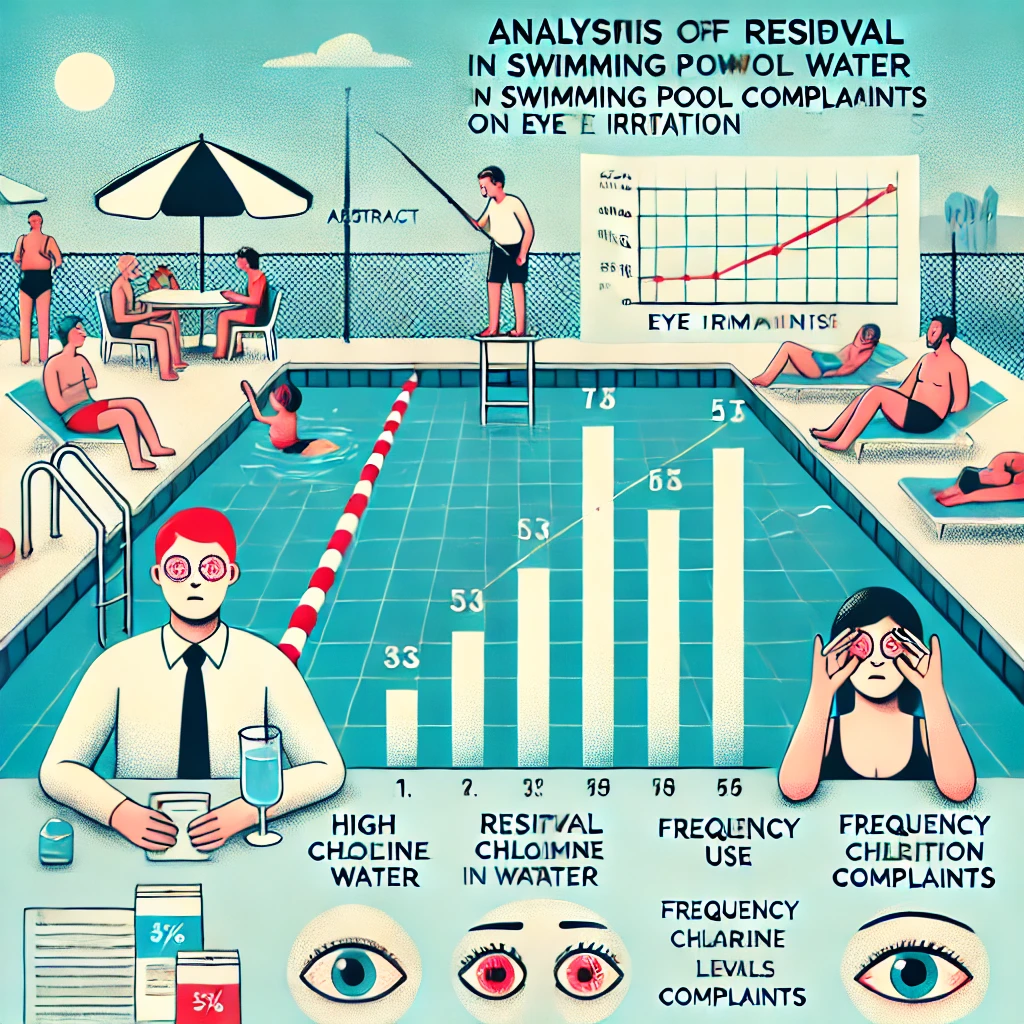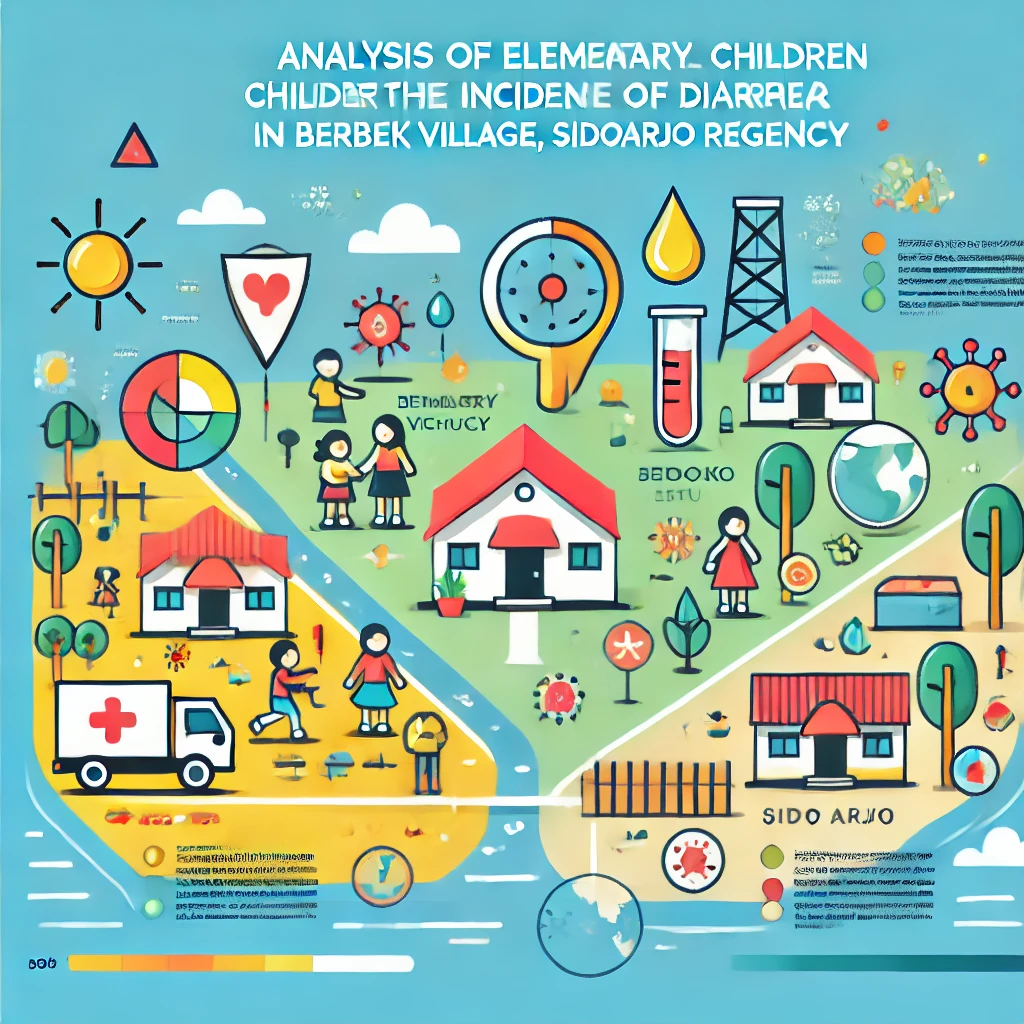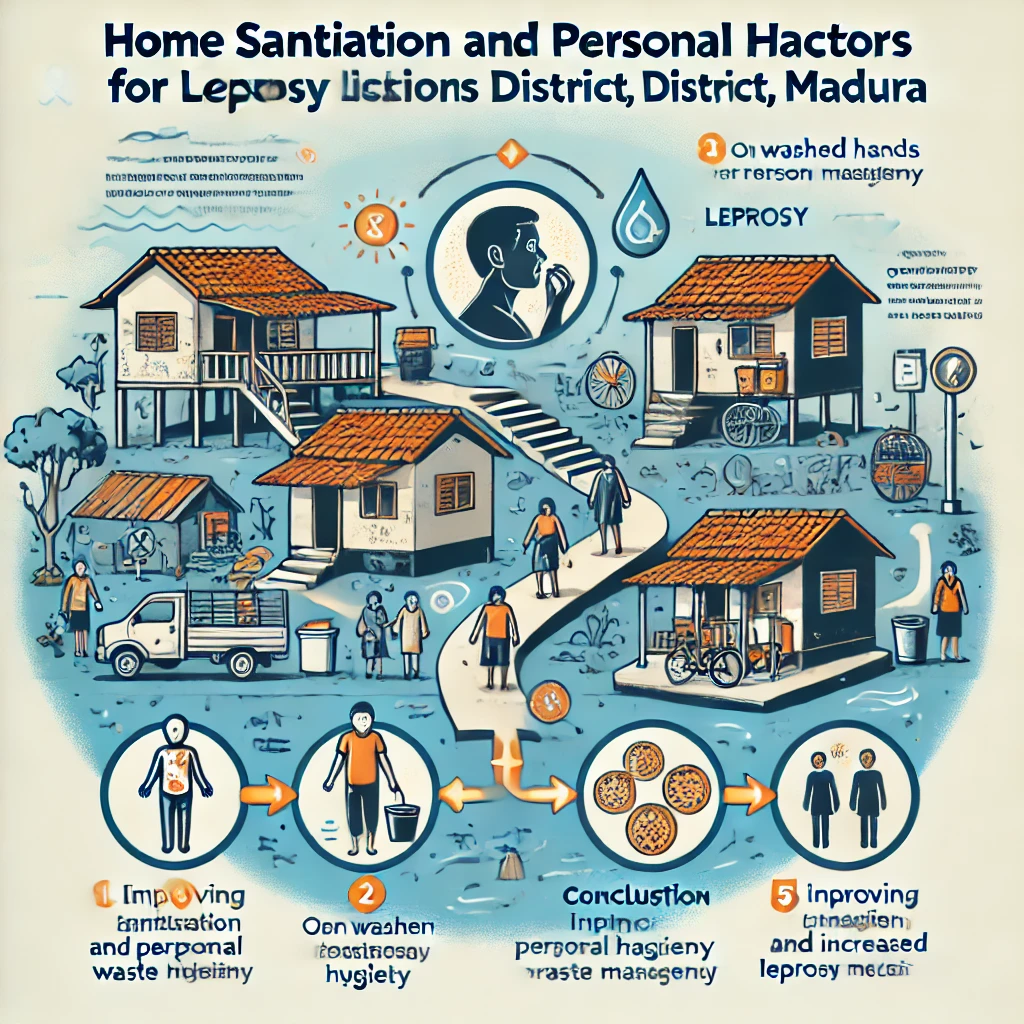Risk Analysis of Sulfur Dioxide (SO2) Gas Exposure to Traders at Purabaya Terminal

Downloads
Purabaya Terminal is characterized by high vehicle density, making it a potential source of air pollution, particularly from fossil fuel-powered vehicles, such as diesel, which emit sulfur dioxide (SO2) gas. Exposure to SO2 poses health risks to traders nearby, leading to symptoms such as shortness of breath, watery eyes, and dizziness. This study aimed to analyze the health risk levels associated with SO₂ exposure to traders at Purabaya Terminal. The research utilized an Environmental Health Risk Analysis (EHRA) approach with a quantitative descriptive design and a cross-sectional method. A sample of 32 traders was selected using purposive sampling techniques. Air sampling was conducted at four locations within the terminal, and data analysis assessed exposure levels and potential health risks to traders. The average SO2 concentration was found to be 0.018 mg/m3, which is below the threshold limit set in the Minister of Manpower Regulation No. 5 of 2018. The average air temperature was 29.9 oC, with humidity at 78.7% and wind speed at 1.14 m/s from the west. Intake exposure values ranged from 0.0007 to 0.0033 mg/kg/day, while the reference dose (RfC) was 0.026 mg/kg/day. Risk characterization calculations (RQ) indicated that all respondents had RQ values ≤ 1. The study concludes that SO2 exposure levels for traders remain within acceptable health risk range and do not pose a non-carcinogenic health risk. However, it is recommended that traders use personal protective equipment such as masks and that terminal management conducts regular air quality monitoring.
Copyright (c) 2025 Nuriska Dwi Rinasifa Ardhiana, Rachmaniyah, Rusmiati, Khambali, Pradevi Milafitri Farista Ananto

This work is licensed under a Creative Commons Attribution 4.0 International License.




















